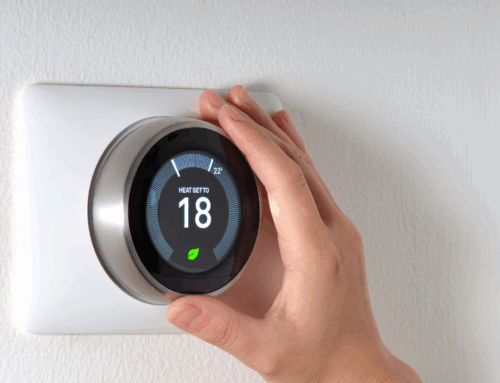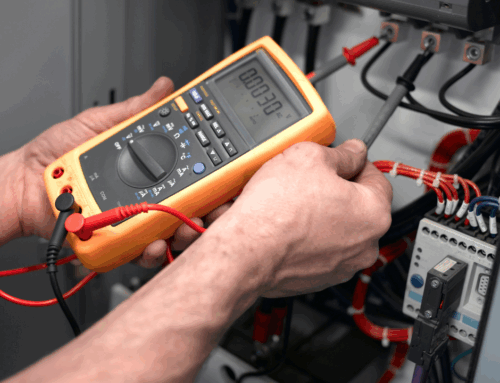Commercial electrical systems are evolving rapidly, driven by technological advancements and a growing emphasis on efficiency, sustainability, and safety. Businesses are increasingly adopting innovative solutions to enhance their electrical infrastructure.
Smart Electrical Panels
Smart electrical panels are revolutionising the way commercial buildings manage their power. These advanced panels provide real-time monitoring and control of electrical distribution, allowing facility managers to optimise energy use and detect potential issues before they become major problems. Features like remote access and automated alerts improve efficiency and reduce downtime, making smart panels a valuable addition to any commercial electrical system.
Energy Storage Solutions
With the rise of renewable energy sources, energy storage solutions have become a critical component of commercial electrical systems. Batteries and other storage technologies allow businesses to store excess energy generated by solar panels or wind turbines. This stored energy can be used during peak demand times or power outages, ensuring a reliable and sustainable energy supply. Innovations in battery technology, such as increased capacity and longer lifespans, are making energy storage more viable and cost-effective for commercial applications.
Power over Ethernet (PoE)
Power over Ethernet (PoE) technology is gaining traction in commercial electrical systems for its ability to deliver both data and power through a single Ethernet cable. This simplifies installation and reduces wiring costs, particularly in modern office environments with numerous networked devices. PoE is ideal for powering low-voltage devices like IP cameras, VoIP phones, and LED lighting, enhancing the flexibility and scalability of commercial electrical infrastructure.
IoT-Enabled Devices
The Internet of Things (IoT) is transforming commercial electrical systems by enabling the integration of smart devices that communicate and share data. IoT-enabled devices, such as smart meters, sensors, and switches, provide detailed insights into energy consumption patterns and system performance. This data-driven approach allows businesses to make informed decisions about energy management, predictive maintenance, and overall system optimisation.
Advanced Lighting Systems
Lighting represents a significant portion of energy consumption in commercial buildings. Advanced lighting systems, including LED technology and smart lighting controls, offer substantial energy savings and improved lighting quality. Smart lighting systems can adjust brightness and colour temperature based on occupancy and natural light levels, enhancing both energy efficiency and occupant comfort. Innovations in lighting technology continue to push the boundaries of what is possible, making commercial spaces more adaptable and efficient.
Building Energy Management Systems (BEMS)
Building Energy Management Systems (BEMS) integrate various building systems, such as HVAC, lighting, and security, into a single platform for comprehensive energy management. BEMS leverage advanced algorithms and machine learning to optimise energy use, reduce waste, and improve overall building performance. These systems provide real-time data and actionable insights, enabling businesses to achieve their energy efficiency goals and reduce operational costs.
Renewable Energy Integration
The integration of renewable energy sources into commercial electrical systems is becoming increasingly common. Solar panels, wind turbines, and other renewable technologies offer businesses a sustainable alternative to traditional energy sources. Innovations in grid-tied and off-grid systems allow for seamless integration, ensuring that renewable energy can be effectively harnessed and utilised. Coupled with advancements in energy storage, renewable energy integration helps businesses reduce their carbon footprint and energy costs.
Electric Vehicle (EV) Charging Stations
As electric vehicles become more prevalent, the demand for EV charging infrastructure is rising. Commercial buildings are incorporating EV charging stations to accommodate employees and customers with electric vehicles. Innovations in charging technology, such as fast-charging stations and smart charging solutions, ensure that commercial electrical systems can support the growing number of EVs. This not only enhances convenience but also positions businesses as environmentally responsible leaders.
Predictive Maintenance
Predictive maintenance uses data analytics and machine learning to anticipate and prevent equipment failures in commercial electrical systems. By continuously monitoring system performance and identifying patterns, predictive maintenance solutions can alert facility managers to potential issues before they cause disruptions. This proactive approach minimises downtime, extends the lifespan of electrical components, and reduces maintenance costs.
Microgrids
Microgrids are self-sufficient energy systems that can operate independently or in conjunction with the main power grid. They offer enhanced reliability and resilience, particularly in areas prone to power outages. Commercial buildings using microgrids can generate, store, and manage their own energy, providing a stable and efficient power supply. Innovations in microgrid technology, such as advanced control systems and renewable energy integration, are making them a viable option for commercial applications.
The latest innovations in commercial electrical systems are driving significant improvements in efficiency, sustainability, and safety. From smart electrical panels and energy storage solutions to IoT-enabled devices and advanced lighting systems, these technologies are transforming the way businesses manage their electrical infrastructure. By embracing these innovations, commercial enterprises can achieve greater operational efficiency, reduce costs, and contribute to a more sustainable future.







Leave A Comment